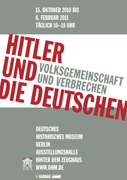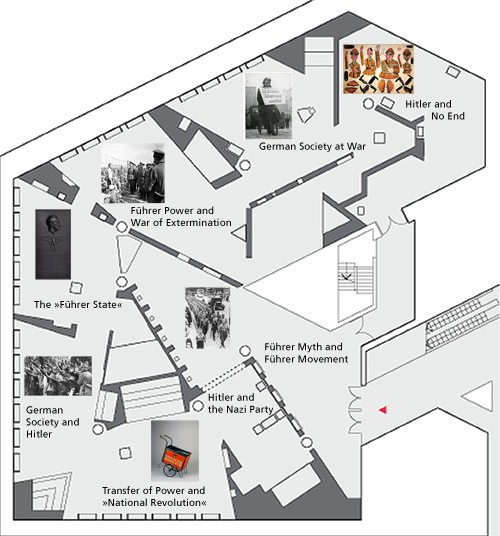

Hitler and the Germans. Nation and Crime
An Exhibition of the German Historical Museum
Curators: Prof. Dr. Hans-Ulrich Thamer, Dr. Simone Erpel, Klaus-Jürgen Sembach
Sixty-five years after the end of the Second World War Hitler and National Socialism still remain explosive issues. Every generation poses similar questions:
How was Hitler’s rise possible? How could Hitler and National Socialism, which were responsible for war, crimes and genocide, count on widespread acceptance by German society until the very end? Why were so many Germans willing to align their conduct with the »Führer« and thus actively support the Nazi dictatorship?
The exhibition seeks answers to these questions by examining not only the phenomenon of Hitler, but also German society and its significance for the rule of National Socialism.
Young Hitler was an unprepossessing character. There was nothing about him that seemed to predestine him to rise to power. Nonetheless he was soon surrounded by devout followers and came to be the most powerful man in Europe. His power can therefore not be explained simply on the basis of his personal characteristics. More important are the socio-political conditions and the mindset of the German people at this time. He mobilized their social fears and hopes and utilized them for his own purposes. The dictatorship rested on mass enthusiasm and approval, but also on violence, murder and physical annihilation.
The exhibition shows the interconnection between Hitler’s personal power and the hopes and interests of large sections of German society. Hitler could not have consolidated his dictatorship without the population’s acceptance of his role as »Führer«. In the process, German society became more and more deeply enmeshed in the politics of the »Führer State«, which promised the people work, advancement, prosperity and the reinstatement of former national grandeur. National Socialist politics packaged these enticements in the rhetoric of the »Volksgemeinschaft«, the myth of a »national community«. Its societal practice comprised the seeming integration of the »Volksgenossen«, the members of this nation, as well as the exclusion of the »Gemeinschaftsfremden« – those »alien« to the community. The Nazi politics led to the erosion of state structures and moral values. It ended in destruction and annihilation.

